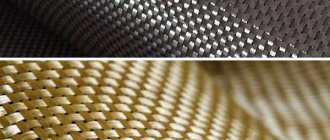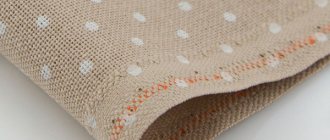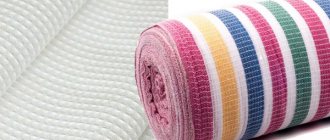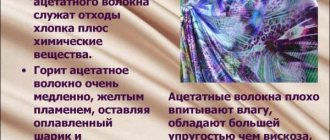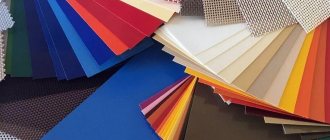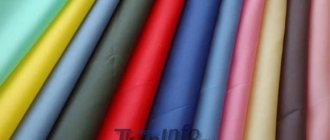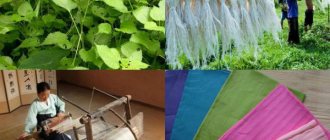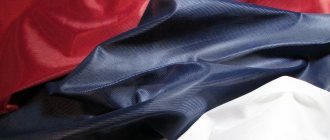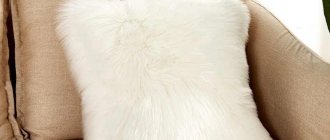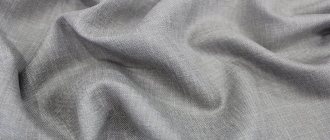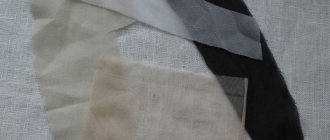Home / Special fabrics
Back
Published: 11/13/2020
Reading time: 3 min
0
347
Asbestos fabric is a fabric with high thermal insulation properties. It is used in many areas of industry to improve the thermal insulation properties of products, protect structures and people. Refers to woven fabrics, produced by weaving threads.
- 1 History and interesting facts about fabric
- 2 Extraction of raw materials, production and composition of canvases
- 3 Marking
- 4 Strengths and weaknesses
- 5 What temperature can it withstand?
- 6 Disputes about the dangers of asbestos
- 7 Precautions for use, transportation and storage
- 8 Areas of use
- 9 Care
- 10 Conclusion
History and interesting facts about fabric
The historical roots of the creation of the first woven material with non-flammable properties should be sought in the cradle of modern humanity - the Mediterranean countries. Chroniclers of those years claimed that the ancient Roman patricians used tablecloths that did not need to be washed. The contaminated fabric was thrown into the fire, where it did not burn, being cleansed by the flame. Stains and leftover food simply burned away under the influence of the heat of the fire.
Legends that have survived to this day say that rich townspeople and people of noble origin used non-flammable asbestos material to make knightly armor, towels, hats and even gloves. In ancient religious buildings, linen was used to protect altars from fire, to wrap torches, and during cremation.
The medieval ruler Charlemagne used the trick of cleaning a stained tablecloth with fire to increase his own authority in front of his naive subjects. It was believed that the ruler of the ancient Franks had a magical superpower to subjugate flames.
The great Russian Tsar Peter the Great surprised famous Dutch masters with non-flammable kitchen utensils made from “Russian kudelka” or “mountain flax,” as asbestos fiber was called in Rus'.
In the last century, asbestos began to be used extensively, where it was not at all necessary: Christmas tree decorations, artificial snow, curtains in theaters were made from it, and even added for some unknown reason to toothpaste.
Advantages of asbestos fabric
Asbestos fabrics are highly durable and wear-resistant, thanks to the mineral crystal lattice of fibers, and do not lose their strength when wet. They have high fire resistance and excellent insulating properties, and are frost-resistant.
It is precisely because of their characteristics and long-term resistance to high temperatures and open fire that they are used in construction, manufacturing and the metallurgical industry.
Asbestos is a natural material belonging to the group of minerals, so products made from it, including asbestos fabric, are very durable. Asbestos fabrics are inexpensive because asbestos mineral reserves are sufficient in our country, which makes such fabric very competitive in the international market.
Extraction of raw materials, production and composition of canvases
Asbestos is not a single substance, but a collective name for a group of natural materials that are similar in structure and texture. They have a fibrous structure and are easily exfoliated during processing. Some asbestos is dangerous to human health, while others cause minimal harm. Chrysotile, a substance from the asbestos group actively used by modern industry, has a structure that is safe for the human body.
The protective properties of such fibers are widely used in industry for the manufacture of various parts for equipment or protective clothing with fire-resistant properties, for example, for sewing firefighter suits.
In modern industry, it is difficult to imagine an industry where asbestos fiber or fabric woven with its addition is not used. Industrial mining of minerals began at the dawn of the eighteenth century.
The auxiliary elements of woven asbestos fabric are threads:
- flax,
- cotton,
- viscose,
- lavsan.
The content of such threads in asbestos fabric ranges from 5 to 18 percent; accordingly, non-combustible natural material contains up to 95 percent. The temperature at which the material retains its working properties is up to 500 degrees. Under the influence of high temperatures, modern asbestos fabric does not emit substances harmful to human health and is approved for use even in industry.
Fact! Asbestos is not grown in fields like flax or cotton, is not sheared like animal hair, and is not a product of various chemical reactions. It is mined from the depths of the earth in quarries, like coal or iron ore.
Production
asbestos thermal insulation
Asbestos (translated from Greek as indestructible) or mountain flax is a fine-fiber mineral with a complex chemical composition, belonging to the class of silicates.
To produce the fabric, non-carcinogenic (safe for humans) chrysotile asbestos or magnesium hydrosilicate is used. This is a layered substance consisting of bundles of very thin fibers that are very tensile (strength comparable to steel).
The long fibers are combed, a binding material (cotton threads or polyester fiber) is added and spun into threads, the so-called asbestos yarn.
The yarn is woven into fabric on looms. In this case, three types of weaving can be used:
- simple linen;
- rep;
- twill.
The performance characteristics of asbestos fabric products depend on the amount of binding fiber in such yarn.
High-quality clothes for home and work from Lori knitwear are the dream of every woman. High-quality knitwear, even in large sizes, is distinguished by the originality of the models.
Read here how to turn a nursery into a fairy-tale world.
It is produced in rolls of different sizes (there are standard ones, but the sizes are also agreed upon with the customer), the weight of the roll should not exceed 80 kg. The natural color of the canvas is white with a soft sheen, yellow-brown or yellow-green. Can be painted at customer's request. The surface is rough.
Marking
Labeling of fabrics containing asbestos fibers is carried out in accordance with various legislative acts and standards, the main of which in the Russian Federation and allied states is GOST 6102-94.
Author:
Zakharova Nina Afanasyevna
I hope you like my article! If you find any shortcomings, just write to me about it! I am always ready for a conversation and will answer any questions you have, ask them!

